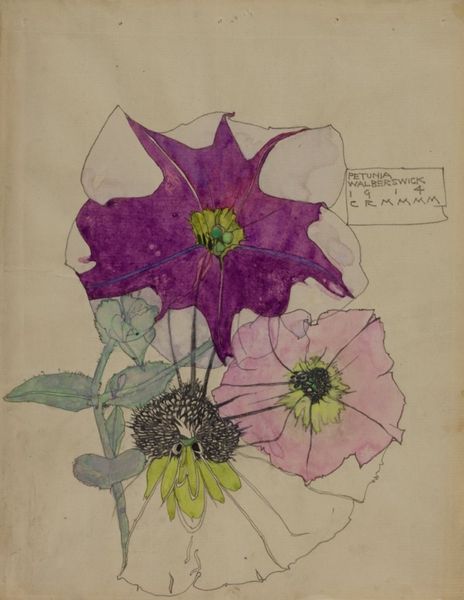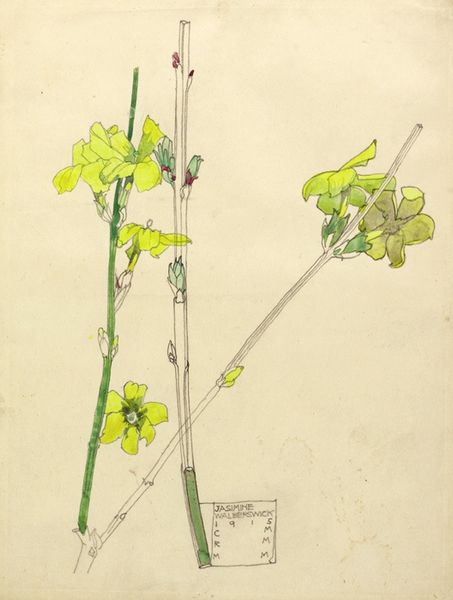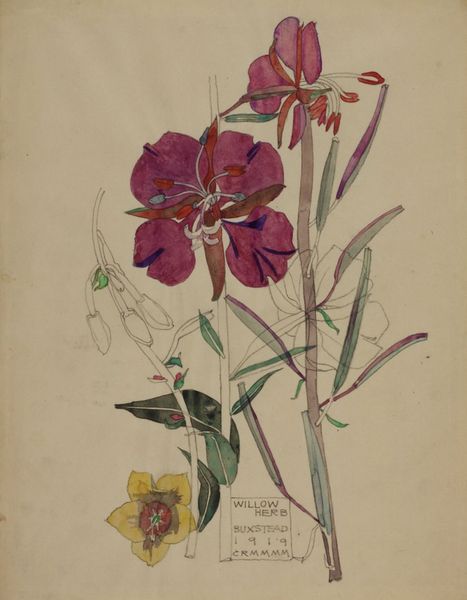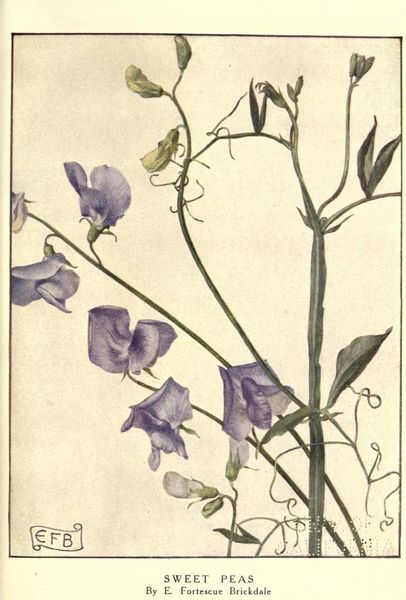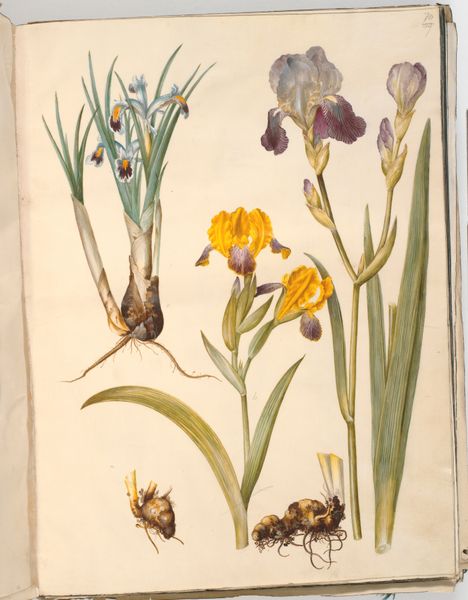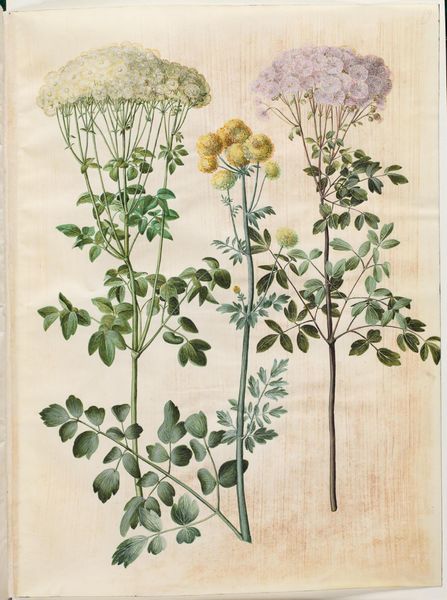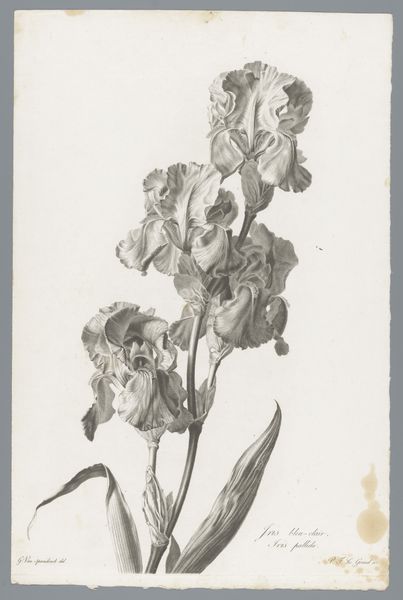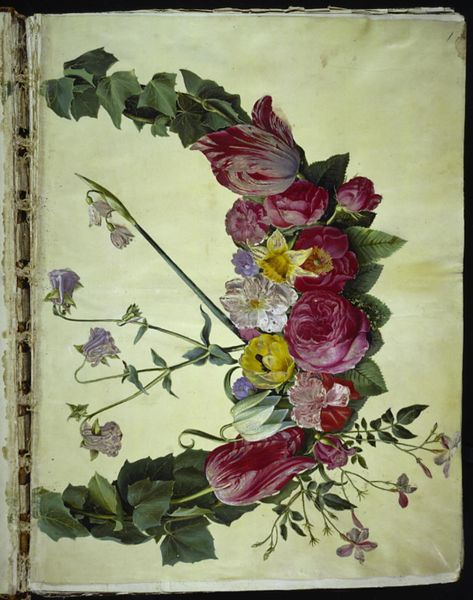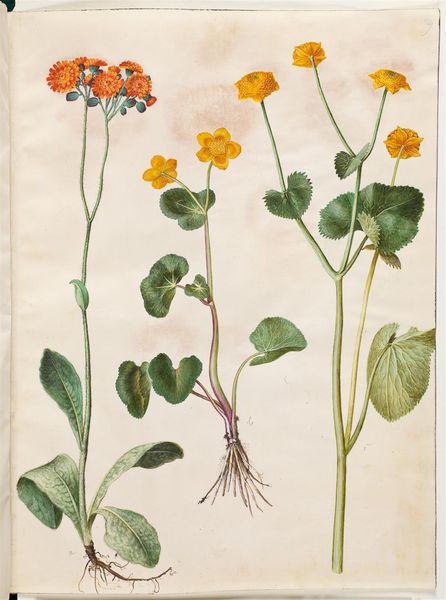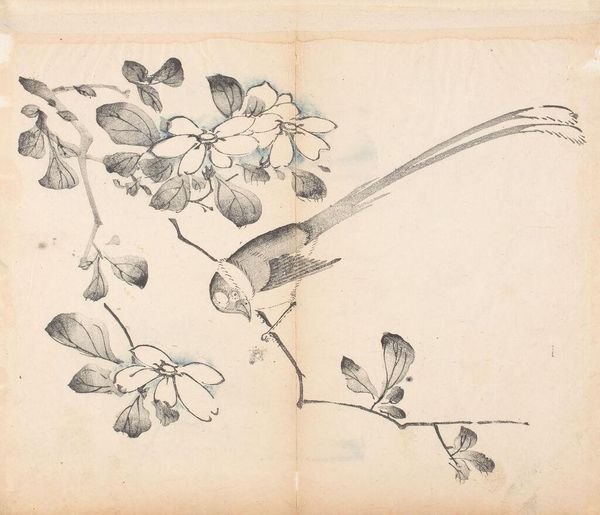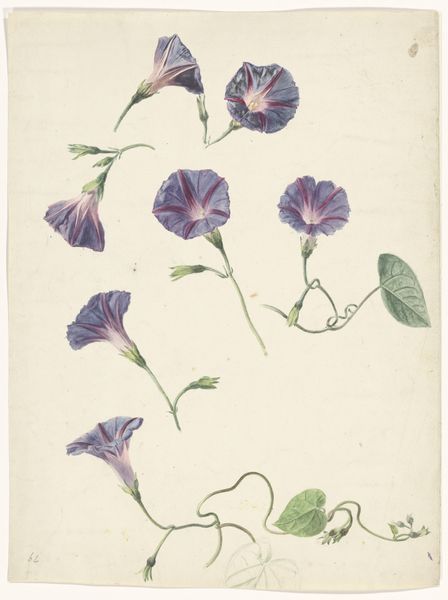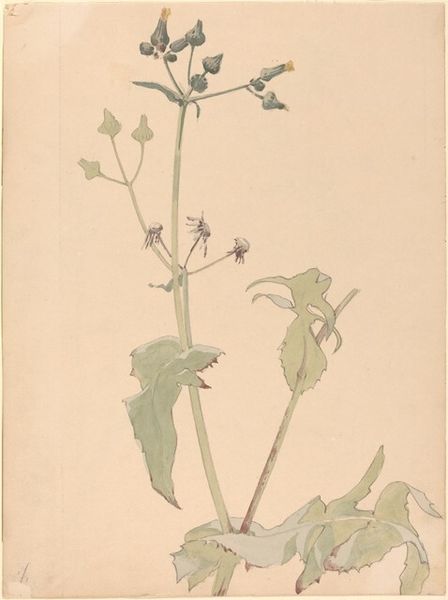
drawing, coloured-pencil, watercolor
#
drawing
#
organic
#
art-nouveau
#
coloured-pencil
#
arts-&-crafts-movement
#
flower
#
glasgow-school
#
watercolor
#
coloured pencil
#
plant
#
line
#
symbolism
#
watercolour illustration
Copyright: Public domain
Editor: This is “Spurge With Yham” by Charles Rennie Mackintosh, created in 1909. It’s a drawing done with coloured pencil and watercolour. I’m immediately struck by the fragility of it, and the layering of the different botanical elements. How do you interpret this work? Curator: For me, it speaks volumes about the Arts and Crafts movement. Mackintosh, of course, was deeply invested in challenging the industrialized production of his time. Think about the materials: watercolour and colored pencil, simple and direct. What labor is involved in the delicate layering to render the botanical elements? Editor: I hadn’t considered the work in terms of its production. It’s interesting you call attention to that. I’m used to thinking about “high art” as divorced from labour, so it's a new way of considering Mackintosh. Curator: Exactly. Consider also the context. The rise of industrial capitalism devalued traditional craft skills. Pieces like this reclaimed value and celebrated the artist's hand and individual skill. Even his subject – a simple, local flower, elevates the beauty of the everyday, opposing mass produced decorative art. Editor: So, it’s a political statement through the chosen materials and subject, in a way. It's pushing back against what he saw as detrimental values entering art. Curator: Precisely. And the lines aren’t perfect; the colours are transparent, vulnerable. It’s all about the inherent qualities of the materials themselves and what they communicate about human agency in the face of mechanization. Notice the pencil notations; how does it humanize the artwork? Editor: I see what you mean. I was focused on the visual aspects, but seeing it through the lens of labour and materials makes it much more powerful. Thanks for making me think differently about Mackintosh! Curator: And thank you for opening up to the nuances of material analysis!
Comments
No comments
Be the first to comment and join the conversation on the ultimate creative platform.
